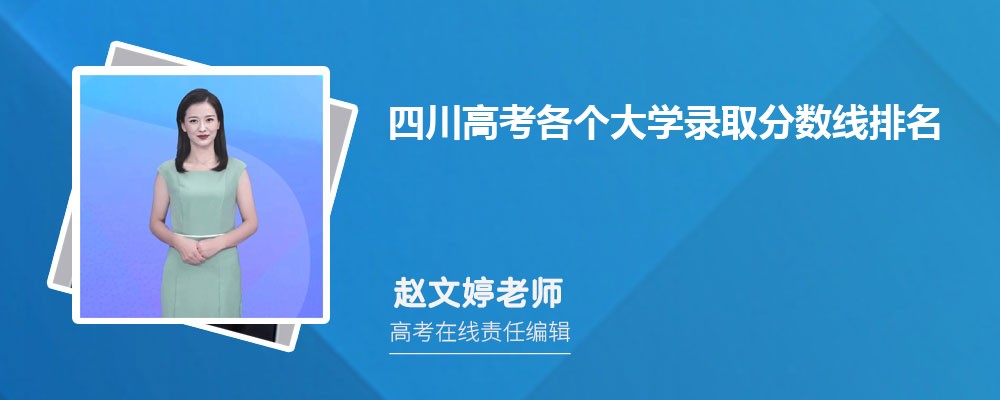-
相关文章
安徽三河古镇著名导游词
2023-08-04 03:00:44河南开封山陕甘会馆导游词范文
2023-08-09 07:21:52最新的北京明十三陵导游词范文
2023-08-06 08:08:48台湾台北木栅动物园的导游词
2023-08-01 03:20:43景点导游词(十五篇)
2023-08-10 21:17:06四川九寨沟导游词(精选十五篇)
2023-08-02 12:51:18湖北省有名景点导游词
2023-08-17 15:31:35安徽三河古镇著名导游词
2023-08-04 03:00:44海阔天空歌词
2023-08-02 07:46:28励志歌曲我要的世界赏析
2023-08-08 04:10:32香港励志歌曲
2023-08-06 12:35:23
湖南长沙博物馆三国吴简英文导游词范文
湖南长沙博物馆三国吴简英文导游词范文
The Exhibition of Inscribed Bamboo Tablets of Wu Kingdom of the Three Kingdoms at Changsha Ladies and gentlemen,
Welcome to Changsha museum. Well be here to visit “The Exhibition of Inscribed Bamboo Tablets of Wu Kingdom of the Three Kingdoms at Changsha and The Years of Unearthed Most Valuable Cultural Relics”. I hope my explanation can satisfy you!
Now, we are in the first exhibition hall. Here, it adopts panoramic technique, and restores the site of unearthing Bamboo Tablets of Wu Kingdom. In 1996, during July to November, in the southeast of Wu Yi square, team up with Ping He Tang Department. The exhumations were carried on by Changsha relics work teams. They unearth 61 archaic wells during the
Warring States period and the Ming and Qing Dynasty, and found out 3000 kinds of relics, like copper, iron bamboo, wood, ceramics, and so on. To people’s astonishment, in the No.22 archaic well, they found lots of bamboo tablets and wooden
slips. After confirming, they are the relics of Sun Wu in Three kingdoms 1700 years ago. These patches of relics would replenish the lacked historical materials of three kingdoms exactly. Our country once had four discoveries: The oracle bone inscription of Yin, bamboo tablets and wooden slips of Tunxu in northwest China, Cultural books of Dunhuang stone room, Files of Qing cabinet. Bamboo Tablets of Wu Kingdom of the Three Kingdoms at Changsha can be mentioned in the same breath with the four discoveries, and become the searching subject of international academia.
Everybody! Please look at the cross section reconstruction of the NO.22 archaic well. Its upper part of opening was damaged when it was excavating. This is an irregular circular shape vertical shaft; the bottom has a bag form likely. The opening of the well has a length 3.5 m from south to north, 3.1 m from east to west, and 5.6 m in depth. The opening is covered with pure red brown color clay, 1.5 m deeper of which is the bamboo tablets and wooden slips layer. The bamboo tablets and wooden slips layer is 50 cm thick in center and 20 cm thin on all sides, piled up with slope form. The ropes tied the bamboo tablets and wooden slips have become rotten, but we can see they were buried by bundles at that time. There are more than 10,000 pieces of bamboo tablets and wooden slips by the initial statistics. The second layer is the gray brown clay layer of 3.1 m thick, among them mix up
with lots of bamboo wood scrapes, grass scrapes, leaves, fragmentary bricks, pottery and porcelain and so on. At the bottom of the well is another small well, which has square wooden frame. The four corners are nailed by a stick of spile inlayed with two wooden boards as the well wall. The circle of the well is 93 cm long, 58 cm tall. The function of this small well is probably for gathering the groundwater from all sides of the well, andthen put forward to pour out with water pitcher and other tools in order to maintain the well space dry. This is the living photo taken by the time of excavating.
Analyzing the structure and relics of the well NO.22, it is an ancient well for storing food. The climate of Changsha is so hot, wet and rainy that the food is easy to be rot, but the circumstance under the ground of 10 m depth is just like as a modern refrigerator. The archaeological discoveries approved that people had used this storing method from the time of Shang dynasty.
You may ask that, why were the bamboo tablets of Wu Kingdom buried in the well? There are two statements. The first one considered that in the period of Three Kingdoms, there were so many wars, the suddenly burst-out war made people bury them here in a hurry. The other considered that to bury them in the well may be a way of dealing with the records in the past.
Now please look at the photo. This is the photo of unearthing the No.22 well. We can see that the bamboo tablets and wooden slips were soaked in the mud. Why can they be kept intact for over 1700 years? One of the important reasons is that the ground water level in Changsha was very high, and the bamboo tablets and wooden slips were soaked in the water. Besides, they were buried deeply; they can be sealed up wall. With these, they can be kept intact for over 1700 years.
Next, let’s visit the second exhibition room. In this room we can get the detailed introduction of the bamboo tablets and wooden slips. Before we visit, I have a question to ask. Do you know whether the words on the bamboo tablets and wooden slips were written or carved on them? With the question, let’s look at the photo of the pottery figurine. This pottery figurine was unearthed in a Western Jin tomb in Jinpenling in Changsha in 1950s. On the left of the photo there is a man handing a wooden slip and reading something, the man on the right who were holding a hair pencil in a hand and a wooden slip in the other was writing something. The pottery figurine shows us the condition of ancients writing on the bamboo tablets and wooden slips. Now, we can say, the word on the bamboo tablets and slips were written on them. Did you guess it?
To see another set of photos. This is a hair pencil unearthed from one of the tombs of the Warring State at Zuojiagong Mountain of Changsha in 1954. Its shaft is long and small but easy to be broken. On the side of it there is a bamboo pipe used for containing the pen when it is collected and preserved. This is an ink stone with little ink blocks near it. Here also remains a bronze chopping knife which is used for the calligrapher to make inscribed bamboo and wooden slips and correct writing mistakes. This is a set of photos of calligraphy tools discovered in No.168 Tomb in Jinan city of former capital of Chu State. In addition to this, there are 6 pieces of wooden slips without character. This is also the most complete and most typical set of Han Dynasty’s stationery ever seen up to now. Uniting our ancient people calculates the number of the inscribed bamboo tablets and wooden slips are not “slice”, but “jin”. It is recorded in history that the 1st emperor of Qin Dynasty did not have a rest until he finished reading over 120 jin of memorial to throne and inscribed bamboo and wooden slips.
Please notice the following brief tablet about information of the inscribed bamboo and wooden slips unearthed from all parts of the nation from this century. Among this, the column in red character is the number of the inscribed bamboo and wooden slips excavated from Changsha this time. The number this time has exceeded the total amount of that unearthed from all parts of the nation these years. Therefore, it is named as “the surprising wonder of the world”and “one of the most important archaeological discoveries of this century.”
It is well known that document history in the Three Kingdom Period handed down is very rare.”The Annals of Three Kingdom”by Chenshou in Xijin has 65 volumes, among which there are 30 volumes of Wei Book, 15 volumes of Shu Book, 20 volumes of Wu Book with total of more than 1 million characters. Over the years, the unearthed inscribed bamboo slips and wooden tablets in nationwide archaeology is also rarely seen and only exist tens of pieces in Anhui, Jiangxi and Hubei .But nowadays in Changsha, the total number of the excavation of the inscribed bamboo from Wu State in Three Kingdom Period reaches 10 thousand pieces for just one time and the total wordage reaches more than 3 million if counted with 20 words in each piece. These character materials greatly surpass the total wordage in that of the “Annals of Three Kingdom”, which offers abundant material for the study of social economy, political system, inscribed bamboo and volume system, history and geography and also fill the vacancy of historic works. We can forecast that the discovery of inscribed bamboo slips from Wu State in Changsha will surely influence many aspects of the Chinese historic study and anew examining and verifying the past final conclusion.
Well, let us have a look at this map. Though the series archaeological excavation around the “Wuyi square ”by our archaeological workers, we have preliminarily defined the region of the ancient Changsha .It extends northward to “Lao Zhaobi ”, southward to “Pozi Street”, eastward to “Cai’e Road”and westward to “Shanghe Street”which shaped rectangle. And the center of Changsha is today’s “Wuyi Square, which, we can say, hasn’t changed basically nearly 3000years.
The unearthed inscribed bamboo slips and wooden tablets for this time, if according to their shape, they can be distributed to big and small inscribed bamboo slips, wooden tablets and so on; if according to their use, they can be distributed to five kinds:
The first kind is document. It can be subdivided into two parts. One is the land rent document with 0.5m long, 2.5cm wide and 100 to 200 Chinese characters on. The other is the official document which recorded the distribution and exchanging of money, crops, and goods among different governmental setups. Please look at this smaller slice. It is a classified label. It shows us a monthly report recorded by two officials named Huang Wei and Pan lv in the first year of Jia He period.
Second, about judicature, which recorded some detail contents and economic cases, such as the trying, appealing and reexamining? What’s on this wooden tablet is an individual case about a Du You. Du You is a kind of government official. He was sentenced to death for his corruptness of salt, but he was not convinced and appealed to a high court. However, the reexamining did not make the judge change. So he had nothing to do but accept.
The third kind is directory, somewhat like the household and registered books today. Let’s look at this slice. Here the Chinese character “Rong Li”was a name of some place in Changsha. This whole sentence means there is a man named He Qin, 55 years old, lived in Rong Li. His dukedom is Gong Cheng. And here "Suan Yi" means can be counted as one of a taxpayer;" Xing Liang Zu" refers to whose legs had been cut off. The directory served as a registered permanent resident, which put down people’s name, age, position and something we can’t find in our registered permanent resident---physical condition.
The fourth one is calling card. It mainly referred to paying respect, giving gift and administrative affairs, as visiting cards we use today.
The last kind is the wooden tablet on account which recorded the managing account of departments belongs to Changsha government.
Please look at these historical relics again. This blue and green porcelain in the Three Kingdoms and Tow Jin Dynasties were discovered in ZouMalou ancient well. Look, their glazed colors is sparking and crystal-clear, the decorate are simple and element. The second among them is called "Chichen-Head Potting", the potting is coronal form, guides the neck and proceeded high, and the modeling of it is very beautiful. These potting were very popular in Jin Dynasty. They were used as pitcher and chalice.
Everybody has seen many photos, has listened to so much explanation, now we come to see the original of the bamboo slips, wooden tablets or slips for writing.
Now, you see in the pyramid shape exhibition cupboard, it is a bamboo slips and wooden tablets or slips original that explored in Zoumalou in the ancient well of the building this time. The bamboo slips and wooden tablets or slips are the material that the ancient remains of our country come down to write. Among them the narrow and long bamboo, the wood chips are called "Jian", the generous wood chips called "Du". You must distinguish one from the other, not wood make are named "Du", what bamboo make named "Jian". Jian has the wooden one, too. Ok, the right side of I there set some inscribed wooden tablets, the middle are heavy inscribed wooden slips. In the left, they are bamboo slips that pressed under the transparent glass. The characters on the bamboo slips and wooden tablets or slips are simple and clear. It’s easily can be distinguished. The script is the transition from Lishu to Regular script.
These kinds of inscribed wooden slips and inscribed wooden tablets are made in shirt woods. The quality of these trees is pre-pressing. It is intact to keep. The raw materials of inscribed bamboo slips is bamboo whose quality is loose, apt and crooked and out of shape, so it in displaying and need press when exhibiting. The ancients have several procedures to make the bamboo slips. First, they cut the bamboo into bamboo slips, and then burnished them in order to make them smooth, these smooth slips called “Jian”. But people could not write on the wet bamboo slips. Then, they roasted dry the wet bamboo slips. While roasting, there was some water steaming out. The water looked like sweet, so people called those “Sweet Qing”or “Sha Qing”.
The “Guo Ling Ding Yang”of Wen Tianxiang said that “Since ancient times, who has no death? Remaining sincere heart to finish ‘Sweet Qing’.
Bamboo Tablets of Wu Kingdom of the Three Kingdoms at Changsha has very strong historical value, article value and scientific value, so the provincial leaders, city leaders and related experts decided to set up an exhibition of bamboo tablets and wooden slips.











